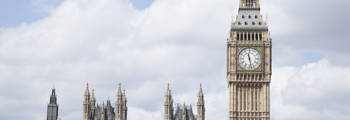01/12/2022
In this two part series we identify health and safety and children’s safeguarding issues arising from the recent inquest of Awaab Ishak, whose death resulted following exposure to mould in his family home.
Health and Safety is a significant strategic risk for the housing sector to manage, and whilst there are a number of legislative requirements to ensure that properties are fit for human habitation, compliance with statutory requirements should be considered a minimum in ensuring that tenants are safe in their homes.
Ensuring that health and safety risks in the housing sector are effectively managed means taking accountability for and proactively identifying, assessing, monitoring and mitigating risks to establish sufficient oversight of prevalent health and safety issues. Such oversight requires both an acute awareness of the responsibility to provide safe homes and of the present-day risks that threaten this.
In this article, we discuss the risk of damp and mould in the home environment, something that is not always considered a significant risk to health and safety, and the urgent response that is required from the housing sector.
Case Study: Coroner rules that mould led to the preventable death of two-year old Awaab Ishak
On 15 November 2022, following six days of evidence at Rochdale Coroner’s Court, an inquest found that prolonged exposure to black mould in the home environment was “entirely” responsible for a respiratory condition that ultimately led to the tragic death of two-year old Awaab Ishak.
Awaab’s father, Faisal Abdullah, had initially raised the issue with Rochdale Boroughwide Housing (RBH) in 2017 upon noticing that black mould had started to develop in the one-bedroom flat that he shared with Awaab and Awaab’s mother. Mr Abdullah repeatedly raised his concerns with RBH, however no action was ever taken and the family were advised to simply paint over the mould. Concerns had also been raised by a health visitor who had written to RBH twice in 2020 expressing concern about the negative health effects that the mould could have on the family’s health.
In June 2020, Mr Abdullah initiated a claim over the persistent mould issue and RBH’s continuous failure to take action, however RBH policy meant that any repairs could not be undertaken until an agreement had been reached on the claim. By December 2020, Awaab was experiencing a shortness of breath which initially required hospitalisation and ultimately resulted in the fatal respiratory condition and cardiac arrest.
The Coroner’s ruling serves as a timely ‘wake-up call’ for the sector, which must endeavour to expand its understanding and awareness surrounding the impact to health of damp, condensation and mould in the home. This is particularly so in the context of the cost of living crisis, which will require landlords to make plans to tackle the risk of worsening damp and mould issues as energy bills rise.
The causal link between mould and respiratory illness
Following the Coroner’s verdict on the circumstances surrounding Awaab’s death, Vice-President of the Association of Directors of Public Health, Greg Fell, has reiterated the ‘hidden risk’ to public health posed by mould in the home environment.
Mould is most commonly found in homes with too much moisture and is generally caused by poor ventilation, leaks, condensation and structural defects. The NHS advises that such mould in the home can produce allergens, irritants and toxic substances which can trigger an allergic reaction or even lead to rare conditions such as hypersensitivity pneumonitis, allergic alveolitis and chronic rhinosinusitis.
Asthma suffers are at particular risk of mould spores triggering symptoms, however children, the elderly and the immune-compromised may also be at risk of related health complications. The existence of mould in the home and the impact on young children has become an increasing concern for health professionals, with The Royal College of Paediatrics and Child Health describing mould as “a crucial issue for child health” and encouraging doctors to ask families about their living conditions when reviewing a child with respiratory issues.
UK lung charity, Asthma and Lung UK, has also issued a warning to the public to be vigilant against mould and damp, particularly in the context of the cost of living crisis. The charity draws attention to the link between mould and respiratory illnesses explaining that exposure to damp and mould can be very harmful to our lungs, triggering asthma and worsening other life-threatening lung conditions.
What does the law actually require and what is to come?
Section 11 of the Landlord and Tenant Act 1985 (the Act) as amended by the Homes (Fitness for Habitation) Act 2018 requires landlords:
- to keep in repair the structure and exterior of the dwelling-house (including drains, gutters and external pipes)
- to keep in repair and proper working order the installations in the dwelling-house for the supply of water, gas and electricity and for sanitation (including basins, sinks, baths and sanitary conveniences, but not other fixtures, fittings and appliances for making use of the supply of water, gas or electricity), and
- to keep in repair and proper working order the installations in the dwelling-house for space heating and heating water.
A breach of any of the above gives rise to a damages claim by the tenant against the landlord.
Section 9A of the Act requires landlords to ensure the property is fit for human habitation. It can now clearly be argued that mould can leave a property unfit for human habitation.
The Health and Safety at Work etc. Act 1974 requires employers, which will include those in the housing sector, to not only take steps to ensure employees are safe and not exposed to risks to their health and safety, but also others who may be affected by their undertaking – including residents. Employers must do everything that is “reasonably practicable” to meet this duty. Failing to do so could lead not only to health and safety prosecutions but also manslaughter prosecutions, both against organisations and potentially individuals, with the potential for unlimited fines and lengthy prison sentences for individuals.
There are also specific requirements in the Housing Act 2004 for housing to meet certain standards / conditions and to be free from certain hazards, with provisions for enforcement action to be taken against those that fail to meet those requirements. The Act focuses on 29 housing hazards, the first on this list being damp and mould growth.
Secretary of State for Levelling Up, Housing and Communities, Michael Gove, has emphasised the impact of Awaab’s preventable death and has called for the government to toughen regulation in an effort to ensure that registered providers of social housing (RPs) are held to account where housing is unfit for human habitation. He has cut £1m funding to RBH due to the failings above and has said they will get no further government funding from the Affordable Home Programme or receive any new contracts. He has also said that other failing providers would not get future funding. The Social Housing Regulation Bill is currently going through the Committee stage in parliament and if passed, the Bill will aim to improve the regulation of social housing by introducing a number of provisions to enhance the powers of both tenants and the Regulator of Social Housing to drive a stronger and more proactive regulatory regime in respect of consumer standards.
RPs could also now become responsible for mould regardless of the cause. With the cost of energy increasing and the temptation by tenants to reduce the bills by not using appliances such as tumble dryers and keep the windows closed to stay warm, the prospect of mould cases is likely to increase significantly exposing tenants to an increased risk of harm and landlords to an increased risk of disrepair claims.
On the 22 November 2022, the Regulator of Social Housing ordered all RPs with more than 1,000 homes to report their most recent assessment of the extent of damp and mould hazards, action they are taking to remedy them and to detail the process they have to identify and deal promptly with damp and mould cases when they are raised by tenants.
How should the Housing Sector respond?
It is not yet known whether RBH will face criminal prosecution in relation to Awaab’s death.
According to the most recent data published by the Government however, the English Housing Survey 2018-2019, 27% of households reported having an issue with damp, condensation and mould between 2018 and 2019. This varied according to tenure with private renters (37%), local authority renters (36%) and housing association renters (36%) being more likely to report these problems than owner occupiers.
In view of the alarming statistics and the evidently increasing concern around the health and well-being of those living in such environments, it is clear that a strategic response to damp and mould is required from the housing sector. The Housing Ombudsman has released its 2021 Spotlight Report on Damp and Mould asserting that social landlords should be adopting a “zero-tolerance approach” to damp and mould and identifying 26 recommendations to help landlords tackle the growing problem.
One of the fundamental recommendations relates to the need for landlords to adopt a more proactive rather than reactive approach to damp and mould interventions. This recommendation includes the implementation of a data driven, risk-based approach to anticipating damp and mould issues that will facilitate early intervention before the problem worsens and a formal complaint is made. Landlords would also benefit from a clear and comprehensive framework policy to specifically address damp and mould. An effective policy would include proactive investigations to discovering damp and mould and appropriate interventions to mitigate risks, which would in turn aid budget and resource management.
Similarly, landlords should review the processes that allow residents to report repairs and encourage the reporting of early signs of mould that would help to avoid more serious damage. This review should include a close examination of the support provided to residents to ensure that this is effective enough in helping residents to spot the early signs of damp and mould in their properties.
Whilst the Ombudsman’s report recognises the challenge for landlords in tackling the growing problem, the report also highlights the need for landlords to take responsibility for damp and mould issues rather than blaming the issues on the residents’ lifestyle. Landlords must ensure that reports of damp and mould are taken seriously and that responses to reports reflect the urgency of the issue. This means that reporting and record keeping processes should be regularly inspected to ensure that reports and complaints can be resolved before the issue escalates. It is important that enough resources have been allocated to the health and safety function and that staff have received sufficient training to allow them to implement policy and effectively manage the risks to tenants.
In Part Two, we consider the issues of children’s safeguarding that this case highlights for the housing sector. Read it here.
This article was co-written by Alexandra Phillips, Trainee Solicitor.






